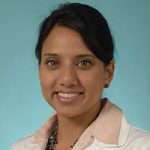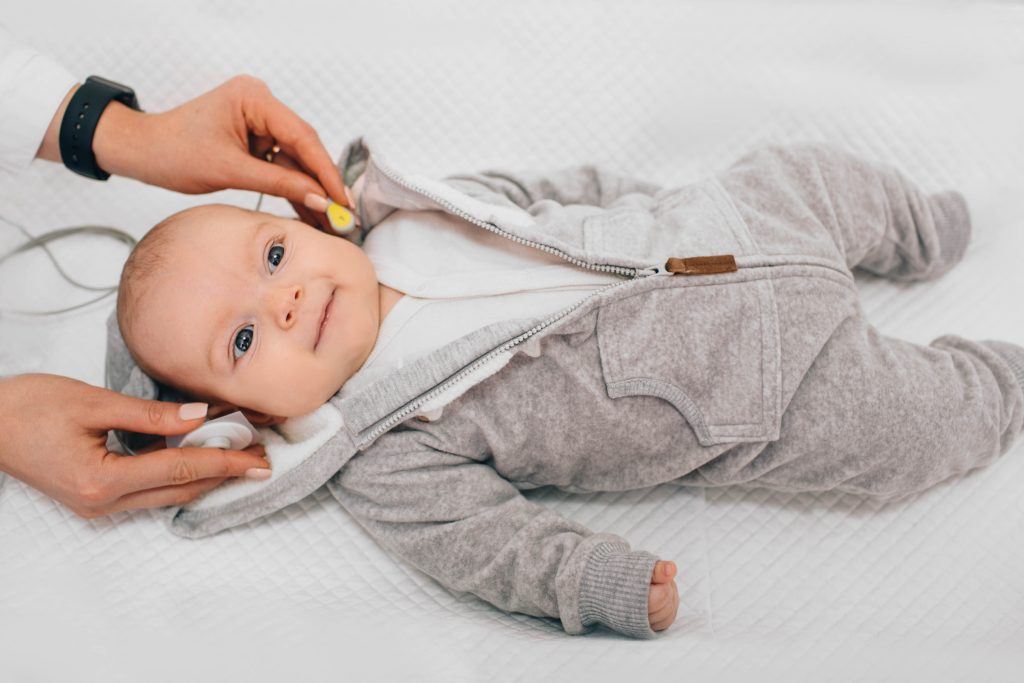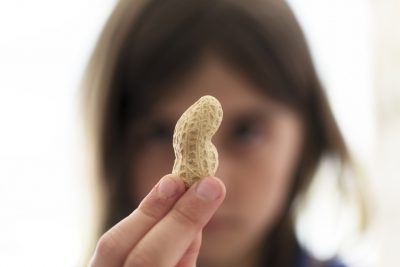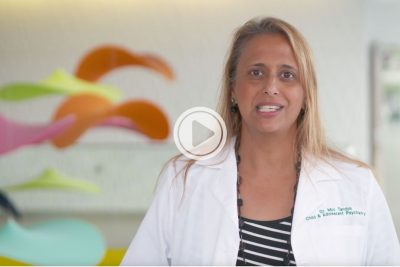At birth, most children hear, listen and will start to respond to sounds. However, 1-3 of every 1,000 children born in the United States have some level of hearing loss. Early screening and diagnosis help us identify children as early as possible. Every state and nearly all US territories have a universal newborn hearing screening; more than 95% of babies are screened by their first month.
Babies’ hearing is screened in the hospital or birthing center. There are two different screening methods that may be used. Both are quick (5-10 minutes), and can be done while your baby is sleeping or resting. Both of these can help rule out a significant hearing loss.
1) Automated Auditory Brainstem Response (AABR or ABR)
This measures how the hearing nerve and brain respond to sound. Electrodes (much like stickers) are placed on the forehead and behind the ear. Soft earbuds are placed, and clicks or tones are played into the baby’s ears.
2) Otoacoustic Emissions (OAE)
We place soft earbuds and play a soft sound. If the inner ear is working correctly, and there is no fluid, we can get a good response (“echo back”) that we can measure.
What happens if my baby “refers” on a newborn hearing screening?
“Refer” means that conclusive hearing information could not be reliably obtained, but it does not mean that baby is deaf or hard of hearing. Many times this may be due to external factors, such as excess noise in the room, fluid in the external or middle ear space, or there was too much movement. If the child again refers on the second screen, then we will recommend a full hearing test with a pediatric audiologist.
The next step will be to try to do a “sleep ABR,” where the baby does testing with natural sleep (before three months of age). An earbud is placed in the ear, with electrodes placed behind the ear and on the forehead. Different pitch sounds at different volumes are played. Responses from the hearing nerve and brain stem are recorded to find the softest level to which the baby will respond.
If hearing changes are confirmed on the follow-up ABR, then a team of providers including pediatric audiologists and pediatric otolaryngologists (ENT) will come together to discuss treatment and possible early intervention. Remember, our overall goal is to identify hearing loss as soon as possible, and to offer amplification/ tools for hearing success as needed.
Follow-Up Screenings
If there are no risk factors at birth, (and baby passes), then a follow-up hearing screen by three years of age is often recommended, unless parents have any hearing concerns before then.
Many kids will have a hearing screen through their pediatrician (i.e., well visits), and will have periodic screening to check for speech and language acquisition. Most children will have a repeat hearing screen by the time they are in Pre-K or kindergarten. The American Academy of Pediatrics recommends children be screened again at ages four, five, six, eight and 10. Additional screenings are recommended sometime between ages 11-14, 15-17, or any time there is a concern.
*Megan Bertsche, a graduate student in the clinical audiology program at Washington University’s School of Medicine, contributed to this article.






Comments